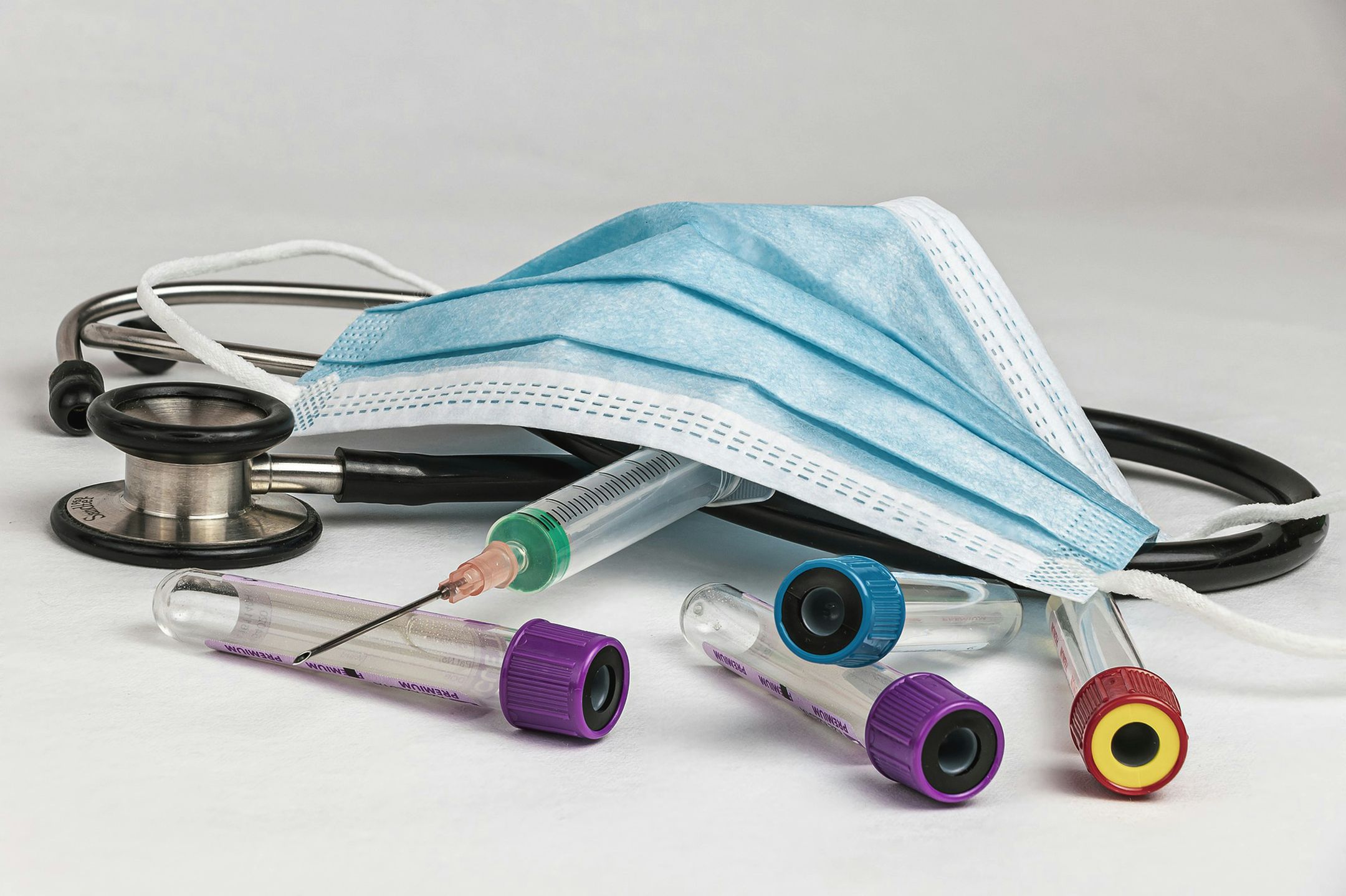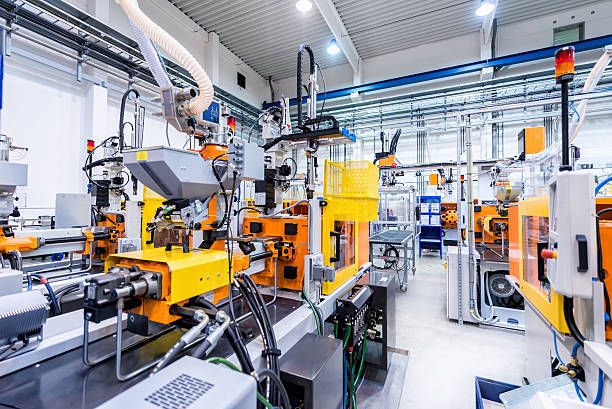Unlock your product's potential with our One-stop solutions!
+86-755-83222882

GET QUOTE
Medical Device Manufacturing: A Guide to Plastic Injection Molding
In the ever-evolving healthcare industry, the production of medical devices is pivotal for improving patient outcomes and advancing medical technology. Among the various manufacturing techniques, plastic injection molding stands out as a cornerstone technology. It offers a versatile, efficient, and precise method for producing intricate components essential for a wide range of medical devices. This guide delves into the nuances of medical plastic injection molding, covering everything from material selection to compliance with regulatory standards.
Understanding Medical Plastic Injection Molding
Definition and Process Overview
Medical plastic injection molding involves the precise injection of molten plastic material into a mold cavity, creating intricate components used in various medical devices. This process enables the mass production of parts with consistent quality and precision, meeting the rigorous requirements of the healthcare sector. The result is high-quality, durable components with tight tolerances, essential for critical medical applications.
Unique Requirements and Standards in Medical Plastic Injection Molding
Biocompatibility
In medical device manufacturing, ensuring that materials are biocompatible is paramount. Biocompatibility refers to the ability of a material to interact with the human body without causing adverse reactions. This is crucial for devices that will come into direct contact with bodily tissues or fluids. Materials must be carefully selected and tested to meet stringent biocompatibility standards, ensuring patient safety and compliance with regulatory requirements.
Sterilization Compatibility
Medical devices must be sterile to ensure patient safety, and they often undergo various sterilization methods, such as autoclaving, radiation, or ethylene oxide treatment. Designing parts that can withstand these sterilization processes without degrading or losing functionality is essential. This consideration must be factored into both material selection and the overall design of the device.
Dimensional Accuracy and Tight Tolerances
Precision is key in the medical field, where even minor deviations can have significant consequences. Engineers must design components with tight tolerances and ensure dimensional accuracy during the manufacturing process. This level of precision is critical for devices like surgical tools, implants, and diagnostic equipment, where exact measurements can directly impact patient outcomes.
Compliance with Regulatory Standards
Compliance with regulatory standards, such as FDA regulations and ISO 13485 certification, is non-negotiable in the medical industry. These standards ensure that medical devices are safe, effective, and of high quality. Manufacturers must stay up-to-date with evolving regulations and design their products to meet or exceed these standards. This includes maintaining comprehensive documentation and undergoing regular audits to verify adherence to quality systems.
Applications of Injection Molded Medical Plastics
Medical plastic injection molding finds extensive applications across the healthcare industry. These include, but are not limited to:
- Surgical Tools: Precision instruments like scalpels, forceps, and retractors.
- Implantable Devices: Components for knee and hip joint replacements, pacemakers, and dental implants.
- Drug Delivery Systems: Syringes, auto-injectors, and inhalers.
- Diagnostic Equipment: Housings for imaging devices, test kits, and fluid handling systems.
- Wearable Devices: Components for medical wearables like heart monitors and insulin pumps.
These applications demand high precision, durability, and compliance with stringent health and safety standards, making plastic injection molding the preferred manufacturing method.
Medical Grade Plastic Materials
Selecting the right material is critical in medical device manufacturing. Below are some of the most commonly used medical-grade plastics in injection molding:
Polycarbonate(PC)
Polycarbonate is renowned for its clarity, rigidity, and impact resistance. It is commonly used in the production of safety shields, surgical tools, and drug delivery devices. Its ability to maintain transparency and strength under stress makes it ideal for critical medical applications.
Polypropylene(PP)
Polypropylene is valued for its excellent chemical resistance, flexibility, and biocompatibility. It is often used in parts requiring repeated flexing, such as syringe plungers and auto-injectors. PP’s resistance to sterilization processes like autoclaving makes it a staple material in medical manufacturing.
Polyethylene(PE)
Polyethylene is a chemically inert plastic widely used in fluid handling applications, such as medical tubing and connectors. Its ability to resist a wide range of chemicals and sterilization methods makes it indispensable in medical device manufacturing.
PEEK (Polyetheretherketone)
PEEK is a high-performance thermoplastic known for its resistance to high temperatures, radiation, and wear. It is commonly used in surgical implants and other demanding medical applications where durability and sterilization resistance are crucial.
ABS (Acrylonitrile Butadiene Styrene)
ABS offers a balance of rigidity and durability, making it suitable for various medical device components, including handles, housings, and assistive technologies like wheelchairs. ABS is also known for its ease of processing and cost-effectiveness in high-volume production.
Selecting the appropriate plastic materials is critical in medical device manufacturing to ensure biocompatibility and compliance with regulatory standards.
Materials must not only meet performance requirements but also withstand sterilization processes and minimize the risk of patient harm.
Factors to Evaluate in Designing Parts for Medical Applications
Biocompatibility Testing
To ensure patient safety, all materials used in medical device manufacturing must undergo rigorous biocompatibility testing. This includes assessing cytotoxicity, irritation potential, and sensitization to confirm that the material will not cause adverse reactions when in contact with human tissues.
Sterilization Methods
The choice of sterilization method can impact material selection and part design. Engineers must ensure that the parts can withstand the chosen sterilization process without compromising integrity. For example, materials like PEEK and PP are ideal for parts that will be sterilized using high-temperature methods like autoclaving.
Dimensionality and Tight Tolerances
Designing for tight tolerances is essential in medical device manufacturing. Engineers must account for shrinkage, warping, and other factors during the design phase to ensure that the final product meets the required specifications.
Ease of Assembly
Designing parts with regulatory compliance in mind is crucial for gaining market access and ensuring patient safety. Engineers must be familiar with FDA regulations, ISO standards, and other relevant guidelines to ensure that their designs meet all necessary criteria.
Regulatory Requirements
Compliance with regulatory standards is non-negotiable in the medical industry.
Designing parts with regulatory requirements in mind ensures smooth approval processes and market access.
Engineers must stay abreast of evolving regulations and design products that meet or exceed these standards to ensure patient safety and regulatory compliance.
Optimization Techniques for Injection Molded Parts
Draft Angles
Incorporating appropriate draft angles in the design reduces friction during part ejection from the mold, minimizing the risk of damage to the part or the mold. This optimization technique is essential for improving production efficiency and maintaining part quality.
Uniform Wall Thickness
Maintaining uniform wall thickness throughout the part helps prevent common defects such as warping, sink marks, and voids. Uniformity in wall thickness also ensures consistent cooling, which is critical for achieving dimensional accuracy.
Cooling Channel Efficiency
Efficient cooling is vital for reducing cycle times and improving productivity in injection molding. By optimizing the design of cooling channels, manufacturers can achieve faster cooling, reduce the likelihood of defects, and increase overall production efficiency.
Quality Assurance Testing for FMedical Injection Molded Parts
Quality assurance testing encompasses a series of tests to ensure the functionality, reliability, and regulatory compliance of injection molded medical components.
These tests include:
Dimensional Inspection
Dimensional inspection verifies that each part meets the precise specifications required for its intended medical application. This is crucial for maintaining tight tolerances and ensuring that all parts fit together correctly during assembly.
Leach Testing
Leach testing assesses whether any harmful chemicals could potentially leach from the materials, ensuring that the final product is safe for patient use. This is especially important for implantable devices and components that come into direct contact with bodily fluids.
Functional Testing
Functional testing involves validating that the components operate correctly when integrated into medical devices. This step ensures that the parts will perform as expected in real-world medical scenarios.
Life Testing
Life testing subjects parts to prolonged use and aging simulations to assess their durability and long-term performance. This is critical for ensuring that the devices will continue to function safely and effectively over their intended lifespan.
Biocompatibility Testing
Biocompatibility testing evaluates the material’s compatibility with human tissues, ensuring that the device will not cause adverse reactions or harm to patients.
Sterilization Validation
Sterilization validation confirms that the components can withstand the chosen sterilization methods without degrading, ensuring that they remain safe and effective for use in medical settings.
Regulatory Compliance and Documentation Requirements
Adhering to regulatory standards is critical in the medical industry. Manufacturers must ensure compliance with FDA regulations, CE marking, and PMDA directives to gain market access. Maintaining comprehensive documentation throughout the manufacturing process is also essential for passing audits and ensuring product safety and effectiveness.
FDA Regulations
The FDA sets strict guidelines for the cleanliness, sterility, and biocompatibility of medical devices. Manufacturers must ensure that their processes and materials meet these standards to obtain FDA approval.
ISO Certification
ISO 13485:2016 certification is a key requirement for medical device manufacturers. This standard outlines the quality management system requirements for designing and manufacturing medical devices, ensuring that they meet regulatory and customer requirements.
Benefits of Medical Injection Molding
Consistent Quality and Precision
Medical injection molding ensures consistent quality and uniformity in the production of medical devices. With precise control over the molding process, manufacturers can achieve tight tolerances and consistent part dimensions, minimizing variability and defects.
High-Volume Production
Injection molding is highly efficient, making it ideal for high-volume production. Automated processes and optimized tooling enable manufacturers to produce large quantities of components rapidly and cost-effectively, meeting the demands of the healthcare industry.
Complex Geometries and Features
Medical injection molding is capable of producing complex geometries with intricate features, essential for modern medical devices. This capability allows manufacturers to create parts that are not only functional but also optimized for performance and patient safety.
By utilizing automated processes and optimized tooling, medical device manufacturers can produce large quantities of components rapidly and cost-effectively, meeting the demands of the healthcare industry.
Conclusion
Medical plastic injection molding is a specialized field requiring stringent validation, quality systems, material management, and regulatory adherence. These measures guarantee the creation of flawless medical components that seamlessly integrate into life-saving devices, ensuring their safe and reliable operation. By collaborating with experienced injection molders, manufacturers can minimize risks, streamline regulatory approval processes, and deliver high-quality medical devices to market.
For more information or to discuss your specific needs, contact us at SZOMK. Our team of experts is ready to assist you with every step of the injection molding process, from mold design to production.
FAQ
What are the most important factors to consider when selecting materials for medical injection molding?
The most critical factors include biocompatibility, sterilization compatibility, dimensional stability, and regulatory compliance. The material must be safe for prolonged contact with human tissues and capable of withstanding sterilization processes without degrading.
How does medical injection molding ensure regulatory compliance?
Medical injection molding ensures regulatory compliance by adhering to FDA regulations, ISO standards, and other industry-specific guidelines. Manufacturers must maintain detailed documentation and undergo regular audits to verify compliance.
What are the benefits of using injection molding for high-volume production of medical devices?
Injection molding offers consistent quality, precision, and the ability to produce large quantities of identical parts cost-effectively. It is ideal for high-volume production where uniformity and tight tolerances are essential.


